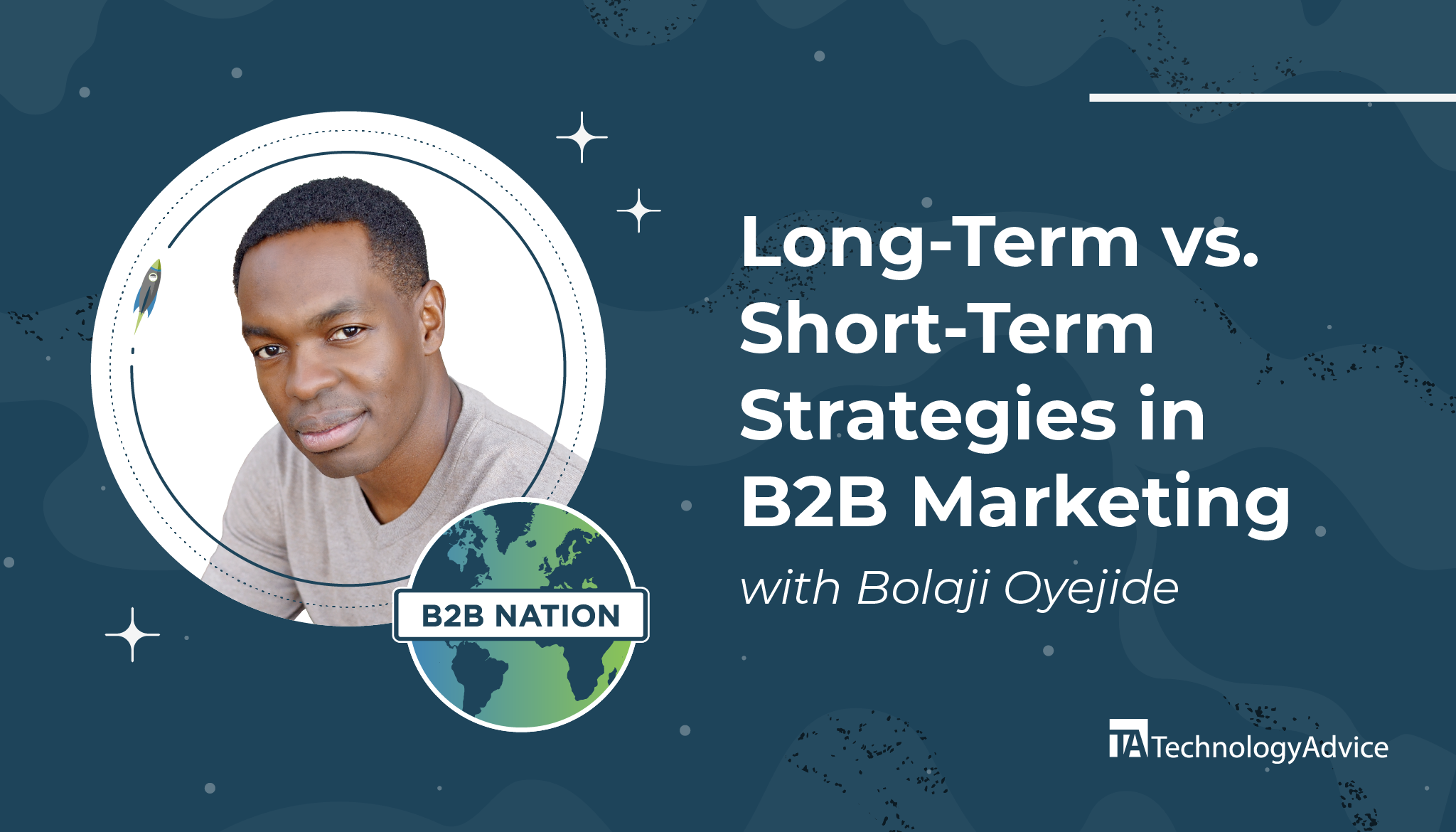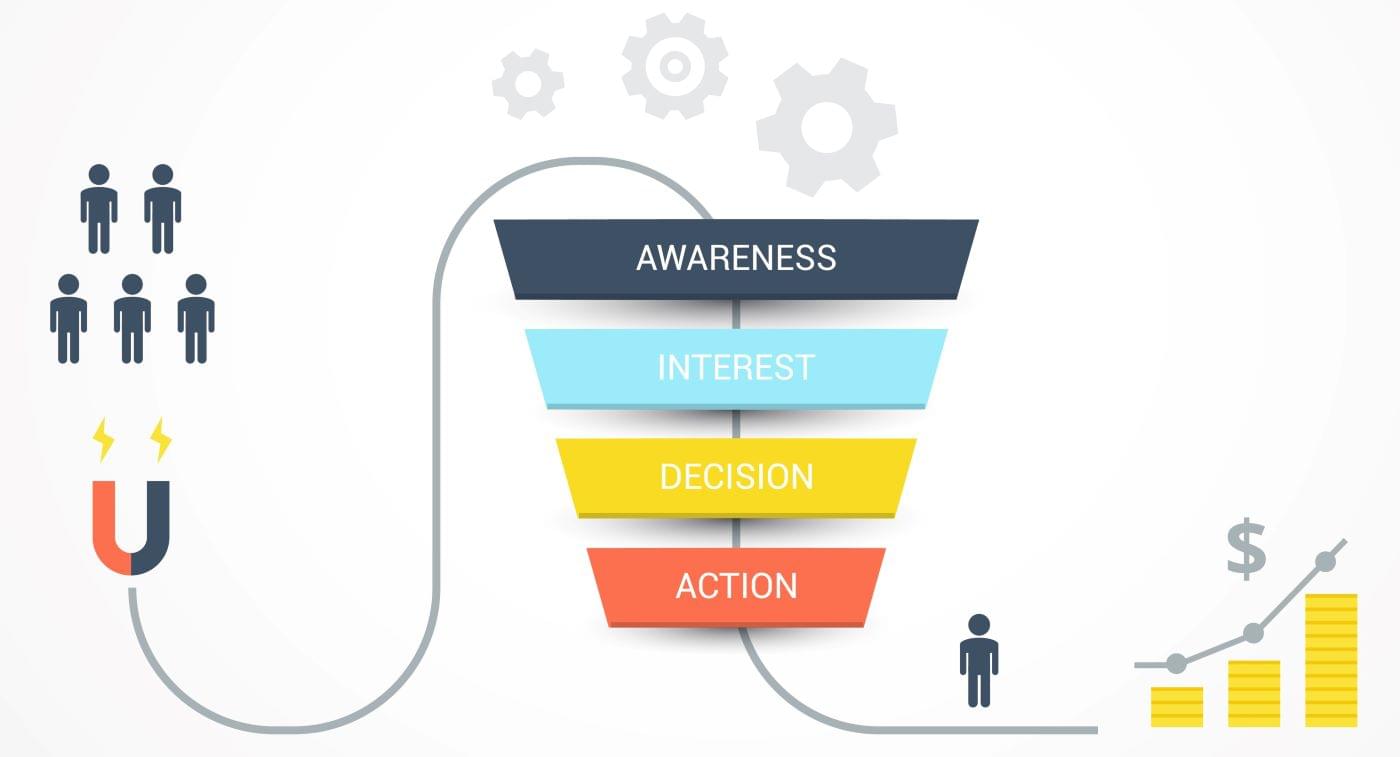The Traditional B2B Funnel
B2B marketing and sales have undergone so many “revolutions” in the past few decades that it’s hard to keep track. Until recently, few have questioned the traditional funnel. Whether inbound or outbound, multi-level, or direct marketing, prospects go in the top, and customers come out the bottom. Every company has different criteria and terminology for each stage in the funnel, but the principles are mostly the same. Before we discuss why the traditional funnel no longer works, let’s define those stages.
Whether inbound or outbound, multi-level, or direct marketing, prospects go in the top, and customers come out the bottom. Every company has different criteria and terminology for each stage in the funnel, but the principles are mostly the same. Before we discuss why the traditional funnel no longer works, let’s define those stages.
Awareness
Beginning at the widest point is awareness, which, depending on your product or services, means one of two things:- The prospect is aware they have a problem
- The prospect is aware of your company or product
Consideration
Once your prospect is aware of their problem, your product, and how your product can solve their problem, they enter the consideration phase. At this point, most prospects begin gathering more specific information: What features does your product offer? How much does it cost? In the traditional B2B sales funnel, the consideration phase usually takes the longest, but motivated buyers that connect with your sales team (perhaps at a conference) can shorten this stage considerably. Moving from awareness to consideration, the lead becomes “qualified.” They have a problem, know about your company or product, and have expressed interest in learning more. ALSO READ: Lead vs. Prospect vs. Opportunity: Definitions that Define the Sales-Marketing Relationship Measuring consideration is easier than measuring awareness, but does require you to judge intent based on the prospect’s actions. For example, a prospect who reads a case study and contacts your team for pricing information is demonstrating purchase intent. They’re likely in the consideration phase and should be considered a qualified lead or even a sales opportunity.Transaction
Once a prospect has converted into a qualified lead or opportunity, the next sales stage is the transaction — assuming your content (or your sales team) has successfully educated the lead. Measuring transactions is easy. How many leads bought your product or service? But measuring progress from consideration to transaction requires a deep understanding of intent. There’s a whole body of stated and implied data that can indicate purchase intent. For example: asking for post-sale details like implementation instructions or customer support may signal that a lead intends to buy.What’s Wrong With the Traditional Funnel?
The traditional B2B funnel is like a romantic movie: all the focus is on courtship, and the movie ends with a wedding. There’s nothing about the marriage, subsequent challenges, children, or plans for retirement in Florida. The wedding is the beginning of the story, not the end. The same is true with the sale. It’s the beginning of the relationship, not the end. We’ve all heard complaints about salespeople who were amazing during the buying process only to disappear after payment. Thankfully, companies understand this problem and have started realigning to maintain the relationship post-sale. Customer loyalty and advocacy programs were the first step in addressing the post-sale relationship, but ultimately these only go halfway. Account-based marketing is the true endgame. ALSO READ: Why Your Business Can’t Ignore Advocate Marketing Traditional customer loyalty and advocacy programs still only focus on you and what the customer can do to help your business succeed. Sure, you need to be authentic and helpful to customers, but customer loyalty and advocacy only encourage your best customers to evangelize, thereby increasing referrals and sales.How is ABM Different?
Modern B2B purchase decisions aren’t made by a single person. According to CEB, the average B2B purchase now requires 6.8 stakeholders (up from 5.4 just a few years ago). Until ABM, you couldn’t connect with more than one of them until it was time for a hard sales pitch. Now, thanks to advances in marketing technology, you can identify and target all of those decision-makers far in advance. ALSO READ: How To Write Truly Personalized Emails And 3 Other Nurture Marketing Ideas- Your sales and marketing teams work together to identify the best accounts to target.
- Using your company’s social networks and marketing channels, you identify a key decision-maker.
- Now, you expand your targeting and work through that person to identify and engage the other decision-makers at your target account.
- Internal advocates beget more internal advocates, and, theoretically, advocates at other companies.
- Everyone buys your product or service, and choirs of angels sing from the heavens.

No disrespect intended to the ABM experts out there, but the idea that someone will advocate for your product before they’ve become your customer is naive at best. I certainly wouldn’t recommend a product with which I’ve had no hands-on experience beyond a sales presentation.
 If we’re being realistic, the sale takes place between the engage and advocate stages, not at the bottom of the flipped ABM funnel. Assuming you continue to engage properly post-sale — through onboarding, implementation, customer success — advocacy will follow.
Perhaps a better model for the modern B2B funnel is an hourglass, which leaves room for both the traditional B2B lead funnel and the ABM flipped funnel. This puts the focus back on advocacy and customer service, but also allows for the all-important transaction to remain a key success metric.
If we’re being realistic, the sale takes place between the engage and advocate stages, not at the bottom of the flipped ABM funnel. Assuming you continue to engage properly post-sale — through onboarding, implementation, customer success — advocacy will follow.
Perhaps a better model for the modern B2B funnel is an hourglass, which leaves room for both the traditional B2B lead funnel and the ABM flipped funnel. This puts the focus back on advocacy and customer service, but also allows for the all-important transaction to remain a key success metric.




